Long before I visited Nottingham, I knew one sure thing about the city that more pretty girls lived there than anywhere else in England. My father said so, my uncles agreed and the whole world knew it.
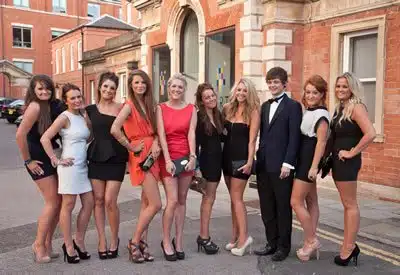
I owe this enlightenment to Margaret Harrison, a Blue Badge guide in the city. The local legend, she said, was that Nottingham had “four girls for every fellah”. Its major industries were geared to them – factory work in cigarettes, pharmaceuticals, bicycles and, particularly, lace-making.
“Women came from all over the country to get jobs here,” she said.. “You only needed men to work the big machines.” Which puts men neatly in their place.
Nottingham, a Changing City
Inevitably, the male-female ratios have levelled out as Nottingham has moved more into service industries and the city has reinvented itself as a place for tourists, rather than just businessmen, to visit.
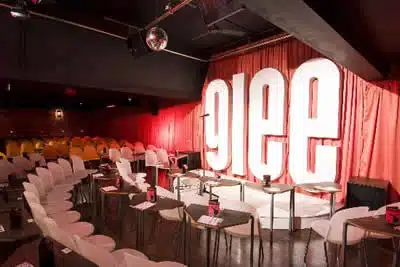
An estimated two million people shop regularly in Nottingham city centre. It has been voted Britain’s third-best shopping city, after London and Glasgow. It has Versace, Armani, Ghost, Ralph Lauren, Prada, Karen Millen, Kookai, Jigsaw, Ted Baker and, of course, Paul Smith.
I pass on these glitzy names on trust, checking spellings as I go. I am no shopper. But, as I settle into the Lace Market Hotel, I can see how this retail renaissance has helped dynamise Nottingham’s image.
The hotel is as dazzling a symbol of regeneration as any city could hope for. It has been built into a pair of Georgian townhouses in the Lace Market area, a tight network of cobbled streets, high on its own hill, that was once the hub of the lace industry.
Factories and warehouses were once jigsawed together; slums and pubs; the Salem Chapel and the Royal Alhambra music hall. As the lace industry declined, however, the Lace Market teetered on the edge of dereliction and became a no-go area at night. Now – well, gaze out of the hotel’s windows.
County Gaol
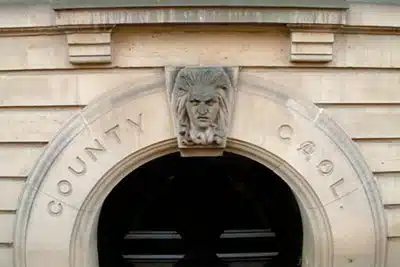
The hotel itself is a joy – all gleaming glass, chrome and clean lines, but with no trace of the formal chill such “boutique” design can all too often imply. The staff are friendly, the atmosphere calm and comfortable, the restaurant (Merchants) excellent. And a plinth topped by three lemons is artfully spotlit in my bathroom. What more can you ask for?
It’s a statement of faith in the New Nottingham, whose tourism strategy has struck out ambitiously from its old reliance on Merry Men in Lincoln green. The history is still there, but it’s being put in a lively contemporary context. There’s a perceptible buzz to the place, as we’ll see on an amble round Nottingham old and new, from the hotel and back again.
St Mary’s church
Start with the old. Across the road, in a yard fringed by horse chestnuts, is St Mary’s church, a survivor from the days when the city’s street names – Bridlesmith Gate, Hollowstone, Beastmarket Hill, Woolpack Lane, Weekday Cross – were descriptive rather than historically decorative.
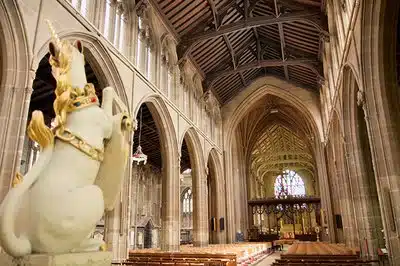
Head north, past the swish new National Ice Centre and restored brick factories and warehouses. As offices and apartments, they look cleaner now than for decades. Archways and alleys open out invitingly.
And there seems to be a restaurant at every turn – Brie parcels by the sackful – as we hit Hockley, Nottingham’s alternative shopping area. It’s so sure of its own style and sense of community that its pavement cafes don’t even hint at self-consciousness.
Nightlife and Eating Out
There are galleries, design shops, fashion shops, New Age shops (a nice line in wind chimes) and record shops with browsers labelled New UK Hip Hop, Classic Funk Reissues, Rub/Rap Remixes and Urban Promos. Run by people who know what other people want to buy.
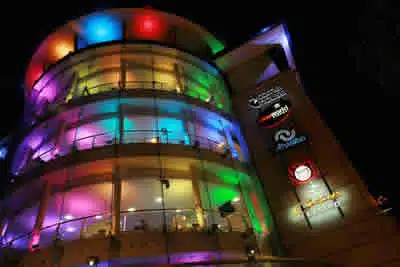
The staff at Santa Fe – a restaurant which you might define as “smart casual” – are helpful and welcoming and will tactfully guide you towards the correct pronuciation of the Tesuque salad which you order for lunch. It tastes as wonderful as it looks – an artful arrangement of shapes and colours; do you eat it or frame it?
More newness a few streets on, in front of Nottingham Playhouse. Anish Kapoor’s Sky Mirror, a vast tilted disc, is one of the UK’s biggest pieces of public art. One side reflects the sky; the other, unexpectedly, reflects the streetscape and flatteringly puts you at the centre of it. All around, Nottingham is at lunch and looks remarkably at ease with itself.
Nottingham Caves
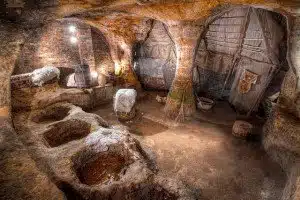
Some are 1,000 years old; most 100 – 400 years. They throw a fascinating light on human hardship that’s a useful antidote to nostalgia. As John Taylor wrote in 1632: “If a man be destitute of a house, he has but to go to Nottingham and, with a mattock, a shovel, a chisel and mallet, he may play the mole and work himself a hole for him and his family.”
It puts Old and New Nottingham in intriguing relief. As a sign in one cave points out: “Behind this wall, people are shopping in Pound-Stretcher.”
And there’s always Robin Hood. Goes without saying.
More Information
If you would enjoyed this guide, why not take a look at some more Nottingham attractions and events in our other Nottingham tourism and travel information guides.

